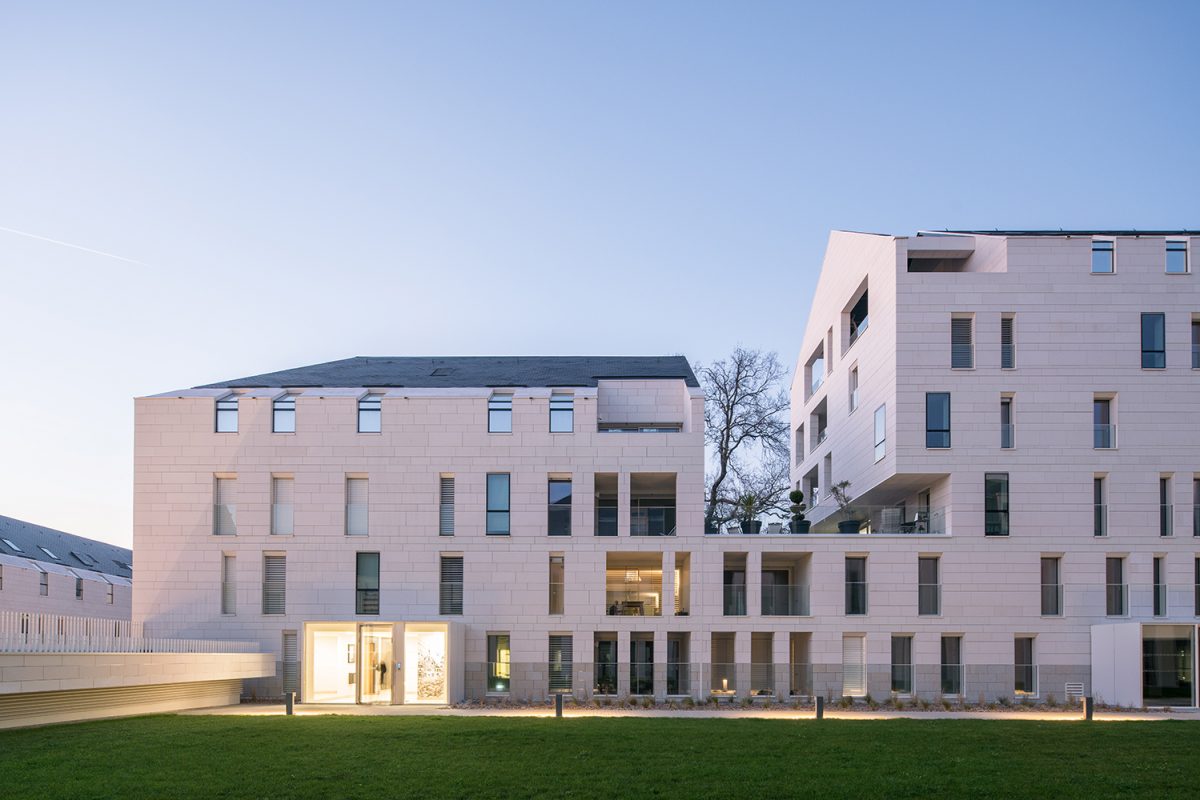Social housing? Social land ownership

Véfa and Elan legislation are blamed for all our housing woes: misapplication of the regulations governing public procurement procedures, developers’ circumvention of competitive bidding, and a decline in architectural quality. Franck Marolleau, an executive working for local social housing landlords in the Paris and Loire-Atlantique regions for twenty years —including Nantes Métropole Habitat— and who now works for the developer Réalités in Nantes, says all this is largely due to an economic context in which the regulation of the housing market undoubtedly remains the greatest challenge.
An interview by Jean-Philippe Hugron
L’Architecture d’Aujourd’hui: The 2008 economic crisis saw a number of developers caught in a situation where they could not offload an important stock of new flats. The Fillon administration responded by authorising the Vente en l’État Futur d’Achèvement (Véfa: flats sold off plan) for rent controlled housing landlords (HLM) which was, under the circumstances, a useful way of averting the collapse of the housing market. This facility has remained in force ever since. But is it still relevant in today’s context?
Franck Marolleau: Today, in Nantes, 70% of social housing, out of an annual number of 2,000 units forecast, is built by developers. Social housing landlords, by massively relying on Véfa, risk gradually losing their quality as developers and winding up as buyers and managers. Moreover, their reliance on private developers is becoming increasingly apparent. The approaching municipal elections are a perfect illustration of this ambiguous relation. In the period leading up to elections, the number of approved building permits has dropped precipitously, leading to a 30 to 40% fall in activity. Dependent on completions from the private sector, the production of social housing is also suffering a steep drop. So, it seems to me that the social housing landlords need to keep producing their own supply of new housing stock. Another issue is the fact that properties developed by private developers don’t stand the test of time as well. If social housing landlords are to continue to play their role as developers, they must pursue an ambitious policy of building a dedicated portfolio of properties.
AA: How is the social housing landlords’ increasing reliance on Véfa impacting the housing market?
FM: By raising prices on the open market! It is an approach used to finance social housing. Within the scope of Nantes Métropole, a development project is often comprised of 35% social and 10% affordable units; thus, half of a housing development is allocated to subsidised housing. For example, in general, a unit of social housing is bought in Nantes by a social housing landlord for 2,000 euros/sq.m. However, the construction cost is at least 1,600‑1,700 euros/sq.m. Add to this the price of the land, the fees of each player involved, insurance premiums, etc., and the total cost quickly rises to 2, 200 or even 2,400 euros per sq.m. The gap is only covered by the sale of units on the open market. It is far more interesting, from an economic point of view, for a social housing developer operating in sectors where the cost of construction is particularly high to purchase flats off plan (Véfa) because such transactions are significantly more profitable. What is more, in keeping with this logic, the skyrocketing cost of land has to be taken into account.
The valuations for taxation and other charges are grotesque as well. There is a lack of control by municipalities and their developers to achieve market equilibrium. Still, some regions are attempting to operate differently. Angers Métropole forbids Véfa purchases. It, however, possesses a portfolio of properties with which to supply social housing landlords. In addition, many projects are co-developed. This seems like a particularly virtuous system because each participant is acting on its own development results according to specific criteria.
AA: Professionals in the sector accuse Véfa of offering a way to circumvent the requirement of architectural competitions for lead contractors. What is your opinion on this issue?
FM: In my view, the success of Véfa is not linked to a desire on the part of rent-controlled housing landlords to rid themselves of the architecture competition. I worked at Nantes Métropole Habitat, a public entity, and we were particularly careful to respect the RFP process. However, competitions do represent a significant cost. In a context in which housing is difficult to acquire because it is expensive and scarce, and financial allocations have drastically diminished and, more generally, the finances of social housing landlords are being impacted by the economic context, it is understandable they might wish to drop the systematic organisation of competitions. We were paying fees of up to 20 to 25,000 euros to three out of four offices, the fourth being the winner. By the end of the year, after ten competitions, we were spending up to 750,000 euros… a pure loss. That is enough money to finance a 30‑unit development. So, it is nonsensical from an economic standpoint —for the architecture firms as well— because only four of 200 submissions are studied and analysed in-depth. A waste of time and money… Competitions must be maintained for large developments with important urban impacts.
AA: … And a decline in the quality?
FM: Very often it concerns a project built in a ZAC (joint development zone) where the requirements briefs are defined by the developers. The datasheets with guidelines for each lot are extremely defined and allow little room for an original architectural proposal. On the Île de Nantes, where there are predominantly private developments, the developer chose the winners based on notes on construction methodologies, with the contractors and the architects —a quality project. So, there are other ways of organising the selection process to guarantee a high level of architectural quality.
AA: Will the social housing landlords’ activity have to undergo a transformation in coming years?
FM: Obviously. Diminishing allocations require different ways of working, more agility, and even more innovation. Too many social housing landlords forgot the necessity of economic efficiency, at a time when municipalities no longer have the resources to keep them afloat. Consequently, they will have to diversify their activities, in particular through the practice of sales to occupants (social housing sales), ‘PSLA sales’ (Prêt Social Location Accession, subsidised loans to tenants to purchase their flats) or ‘BRS’ sales” (Bail Réel Solidaire, subsidised purchase to eligible low-income buyers with restrictions on price of subsequent resale to other low-income buyers), or even become urban planners. The challenge is to both unlock financial resources and create leeway for development projects, as far as social housing landlords are concerned. The ESH (Entreprise Sociale pour l’Habitat, social companies for housing) have already taken up this approach to diversification.
AA: How do you view this facility aimed at encouraging ownership? Is it a cure-all?
FM: In areas with tight housing markets the PSLA is a real commercial success. I could even speak of a windfall effect because the anti-speculative clauses are phased out after seven years. If a buyer can later make a big profit, it seems like a subversion of the purpose of public subsidies. All in all, it consumes a great deal of public monies. The BRS is also an economic model that requires important front-loading of investment because it is for the municipality, through the intermediary of an OFS (organisme de foncier solidaire, subsidised housing organisation), to purchase the land, the ownership of which it retains. Once the flats are sold, each buyer pays a usage fee to rent the underlying land, which enables the OFS to pay off the annuities on its loan and cover operating costs. Resale prices come with a ceiling, in general indexed to the IRL (Indice de Référence des Loyers, rent reference index), thereby making it possible to maintain a supply of genuinely affordable housing while at the same time controlling the use of public subsidies. Social housing landlords should undoubtedly take a greater interest in this model. However, ownership should not be the absolute ideal. Younger generations don’t share the same desire for it. Household incomes cannot keep up whereas related housing charges are constantly increasing (co-op charges, access to gas and electricity, etc.) and in some cases it puts financially fragile households at risk. There is also the danger of creating financially and socially troubled or degraded co-ops. Social housing organisations are asked to intervene to restore some of these but these projects rarely provide a return on investment. Today, social housing landlords have to fulfil their social role through an economically efficient model.
–
This interview has been published in AA 433rd issue – Social housing, a French exceptionalism? – available in our online store.




